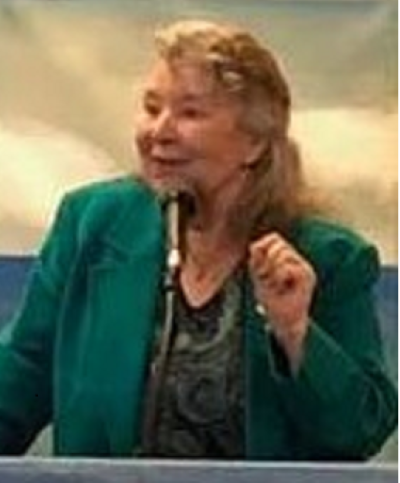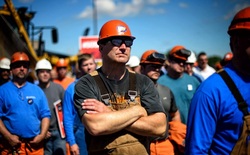
Classes and Value Systems in the United States
Clearly, there are vast differences between the members of the different classes in this country. However, the US being the “land of opportunity” where we can all move wherever we please and learn whatever we choose, class is not a hereditary nor location-based division. Distinctions can't be made simply by income, either, because ministers, for example, generally make about the same income as fast-food workers and far less money than assembly-line workers, but live and vote and consume in very different ways.
A class model of American culture must address the different ways of thinking and working that divide the American people, and starts with the division between abstract thinkers and concrete thinkers. In spite of all the sociological demographic measures, in truth, how people make a living is the next defining characteristic; the values on which their actions are based provides the final filter.
Consider: some people think in terms of their experiences and the things they can see, hear, touch, taste, and smell; they ask questions about objects, events, people, and procedures. Others think in terms of possibilities and principles; they ask questions that apply ideas in lots of different ways. Some people think in terms of specific how-to steps; they read the instruction book or do things they way they were told because each task is different. Others think in terms of relationships and patterns; they see how something they’ve done before is similar to what is being done now and use the same methods as far as they can—typically before reading the instructions.
People in the first group are called concrete thinkers. They tend to experience the world as a series of separate, discrete objects and events, and learn by experience working with objects, or by seeing or hearing concrete examples. Once they learn how something is done, that’s the only “right” way to do it.
People in the second group are called abstract thinkers. They’re constantly generalizing from events and experiences and relating or connecting them to others, and experience the world as an unfolding set of more and more complex interactions hoping to find a few basic principles that apply to everything. All humans generalize, but for abstract thinkers, it’s the only way to operate. Once they see how something has been done, they look for ways to do it better, more efficiently, more beautifully, or in a way that's simply more fun.
Given the difference between these two ways of thinking, is it any wonder that the past thousand years1 have seen almost constant conflicts between, as my grandmother used to say, “Town & Gown”? The Townies, the sons of tradesmen and artisans, live by their ability to manipulate concrete objects. The Gownies, the black-robed students and instructors in the college or university (who used to wear their robes all the time but now only wear them at commencement), live by their ability to grasp and manipulate abstract ideas. Neither understands nor places much value on the other, and both feel a little defensive of their limitations. Well into the 19th century, they lived side by side, the tradesmen selling goods to the intelligencia and the intelligencia providing basic moral, religious, and ethical training to their children. This went on for generation after generation, in a usually uncomfortable dynamic tension, often divided by the walls of the university campus so the boys from the different groups wouldn't taunt and fight with each other.
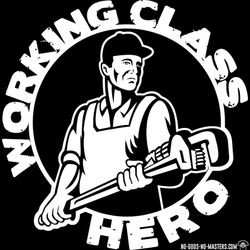
It's not just how we think that defines (and too often divides) us; it's also what we do. In fact, for most Americans, “what do you do for a living?” is the first question we ask when we're getting to know someone. For the purposes of this model, I've divided “what we do” into 2 main classes: we either work with our hands – building, creating, fixing, moving, cleaning, or in some other way manipulating material stuff – or we work with our heads – calculating, exploring, investigating, analyzing, developing, designing, or projecting future states, of ideas and relationships.
People who rely on Concrete Thinking and working with the hands have been the foundation for Industrial Culture. They are the Laborers, Marx's Proletariat, modern America's "White Working Class", “red neck,” or “Joe the Plumber”. A few are day-laborers, living on the fringes of the culture, often immigrants, consuming little and rarely saying anything in the voting place; those few are called here “T-shirts”. The vast majority, though, are the Blue (men) or Pink (women) Collar workers whose parents and grandparents were the same. They work the factories and construction sites, staff the stores and restaurants, provide the support for hospitals, hotels, schools, and churches, and keep the corporations functioning. Some of them work on farms or in the lumber, fishing, and mining industries, in daily contact with natural processes and resources.
For people in these classes, the world is made up of objects to be used, manipulated, or modified to suit one's immediate life purpose. Trees, for example, are objects that may be good for shade, but not if they block a desired view or drop too many leaves or fruit in the wrong place; then they're simply objects to be eliminated. The T-shirt or Blue Collar worker will go out and, with or without the help of friends, do whatever it takes to get rid of it, perhaps cutting up a load of firewood in the process.
When the Concrete-thinking worker begins to be seen as a leader, or comments on patterns and relationships in the work being done, a promotion to manager usually takes place. Suddenly the Blue Collar worker is a White Collar businessman. They're now the manager or owner of a plumbing, construction, or electrical company, the factory-floor supervisor who's been “moved upstairs”, or the effective sales person who's now sales manager. White Collars are also the professionals – they may be a pharmacist, optometrist, engineer, lawyer, dentist, or physician – who once would have learned their trade as apprentices and worked their way up to owning a business, or might have been trained on top of a liberal-arts education, but most of whom today have earned a technical degree and gone straight into the position - a fact which makes the professional suspect to the working-his-way-up Blue Collar. To White Collars, however the got there, an undesirable tree remains an object to be eliminated, but the White Collar will pay someone to cut it down and haul it away rather than do it himself or with the help of friends or family.
Becoming a Power-Broker
When the White Collar manager or business owner reaches a certain level of income and power, another shift takes place. Now people are asking for advice and funds outside of the business. Now there are events in the community that must be attended to maintain that level of income and power. And those events are not made up of people from either the Blue/Pink Collar class nor even mostly of other members of the White Collar class. No, this level of power and income belongs to a whole new class: people who do business during formal dinners and receptions, who attend inaugurations of mayors, governors, and presidents – and often help pay for the celebrations that follow – wearing formal attire as they do their work at these events: they are the Tuxedo class.
Again, it's a difficult transition. Instead of going to an office each day to manage the production and distribution of goods and services, members of the Tuxedo class build relationships and power structures, manage their resources to maximize long-term income and stability, and support the work of creative, thoughtful people around the world. They merge abstract and concrete thinking, working almost entirely in their heads, as they focus on the long term and the largest possible scope. They are now the most powerful people in town, and often tell the politicians what to do.
Possessions are, to the Tuxedo, a sign of power or a source of delight. Nothing else about an object matters to them. A tree is allowed to grow only where it best serves the landscape, or as an indication that this member of the Tuxedo class has the power to let it grow where it is. If something else is more delightful, the tree goes without a thought. People are paid; the work is done; no evidence is left. If a new tree is desirable, it's paid for and brought in. The tree, in other words, is an abstraction, only valuable as an experience of beauty or symbol of the individual's power and will - as is a forest, a lake, or a town.
For the Blue Collar worker who's risen through the ranks of White Collar, the shift to Tuxedo can be painful and almost too much to handle (an was illustrated in many novels and films through the 1930s and '40s). Then there's the problem of how to raise the kids – which value system do they get trained in? How can one take advantage of the privileges of income and power without destroying their unique creative potential? (This dilemma was illustrated in those early films and novels, and more recent ones, like The Ultimate Gift (2007) with James Garner) These are the problems that plague the nouveau riche member of the Tuxedo class – and they are issues of values, ideas, and relationships, not the manipulation of objects; abstractions, not concrete objects.
The shift in ways of thinking that's required in the progression from Blue Collar (concrete, working with hands) to White Collar (concrete, working with the head) to Tuxedo (working with the head at a large scale, using abstract concept but measured in concrete terms), is part of why it's so hard for some people to make the transition into the Tuxedo class from the working class in which they made the money that put them there (as exemplified by the shipbuilder in the film Pretty Woman) – and why their children and grandchildren, who have grown up among Tuxedos and are accustomed to that way of thinking and acting, don't really understand them.
And that, in large part, is why most American Workers have no desire to be promoted to management or become the heads of companies - they just want to live their Blue Collar lives with lots of money.
Another class of American workers are purely abstract thinkers. Many would be, and some call themselves, perpetual students. Some are scholars and philosophers; others are researchers and analysts, and still others are designers and artists. They refuse to wear “business attire” or uniforms or to be confined to a specific “career path” and typically wear jeans or corduroys and sweaters, so may be called the Turtleneck class.
They usually begin their work life in colleges or universities, perhaps extending their degree programs to take just a few more classes and explore just a few more ideas. Some are self-taught, learning from the books and websites they study: usually a mixture of science fiction, history, biography, the encyclopedia and dictionary, and how-to manuals. Possessions mean little to Turtlenecks, unless they represent ideas that are meaningful. Production of goods and services are the furthest thing from their mind. Ideas and possibilities are what's important – whether in the past, the present, or the future. They may go on to work as analysts in a business or government, if they need the income to support their family, or as teachers or social workers or ministers if they can get by on those lower levels of pay. Increasingly, they're found in high-technology companies, where they can work in collegial settings creating interesting stuff and do well financially, too. Often they'll go back for more degrees, and work in a college or university at some point in their career.
For the Turtleneck a tree is a fascinating specimen, or a source of food or delight, or a connection with previous times and places, or a link with Nature, or all of the above. If the tree drops leaves, it's seen as a demonstration of a natural process that contributes to the well-being of all. If it blocks a view, it may be modified or simply left to become the view. Only if the tree becomes diseased or too badly broken to remain or is actually impeding something really important (like a sewer or sidewalk) will the Turtleneck choose to cut it down – and then only with considerable effort to ensure that its remains will be properly disposed of.
Turtleneck workers are explorers and generally work in participatory team structures, rather than top-down hierarchies. They refuse to take on the responsibility for others' work, which is the hallmark of White Collar function, and they refuse to “punch the clock” and “follow orders” which they believe to be the defining characteristics of the Blue Collar worker. Insight and creativity are honored among Turtlenecks, and completing assignments to meet a deadline is the closest they come to following a schedule.
In the agricultural world of the first several thousand years of Western culture, there were very clear roles for both kinds of thinking, as I described earlier as the tension between “town and gown.” Then, in the industrializing world of the late 1700s and early 1800s, concrete thinkers came into their own as powerful and important contributors to society. Men whose minds grasped the function and process of mechanics and the interrelationships of mechanical parts, and who were comfortable in a clearly defined organizational structure, became the stars of European and American culture. Those who could translate that understanding into numbers and record-keeping were the new prophets. Those who could combine the two became the new princes – merchant princes. Concrete thinkers creating and producing goods and building structures made the world an exciting place of possibility. And that's how Western culture sustained itself and expanded, well into the 1980s.
Then something happened. We call it the Computer Age, the Information Age, the Age of the Internet. Suddenly, building things was not nearly as important as building the abstractions that manage things. Computer software is an abstraction, and computer software has become the way everything gets done. So, for the first time in Western culture, abstract thinking Turtlenecks began to have a significant role in the production system.
The Babyboomer generation, the first generation in human history in which the majority of teens expected to go to college, was the turning point. And a shift from concrete thinking to abstract thinking is the intended result of a college education. The “general education” requirements – usually about four terms of coursework – survey the academic disciplines and, in the process, open the mind to see the world in terms of interrelated, overlapping, and sometimes conflicting, understandings, with no clear boundaries between “right and wrong” or “good and bad”. This, to the concrete thinker, is certainly not an acceptable way to view the world - but is essential for the abstract thinker.
And now we have a situation. The United States - and all democratic nations - are founded in abstract principles that cannot be explained in concrete terms. Yet concrete thinkers - the Blue/Pink and White Collar classes, along with some Tuxedos - currently hold the power and resent all forms of abstract thought. It will take all the ingenuity, creativity, and love that the Turtlenecks and abstract-thinking Tuxedos can muster to break through before those values are lost by the actions of those who believe they hold them most dear.
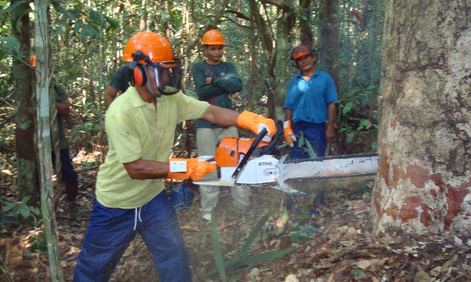

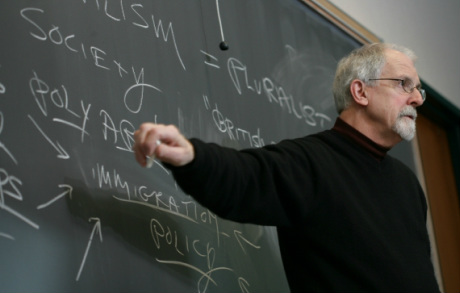


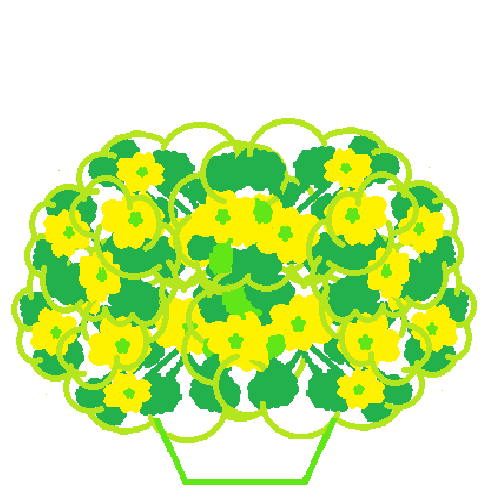
 RSS Feed
RSS Feed
